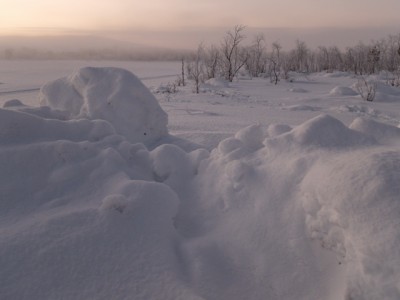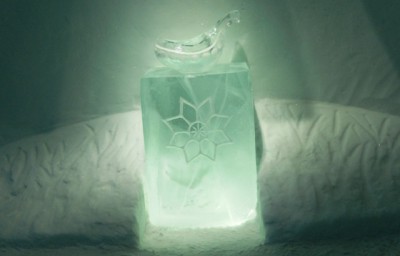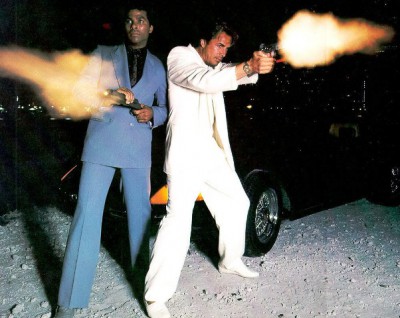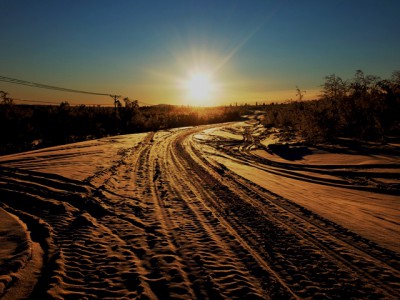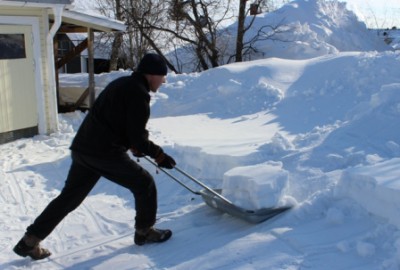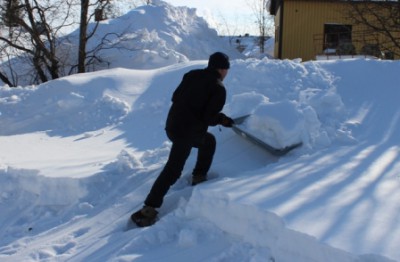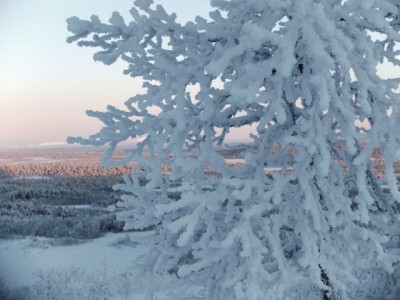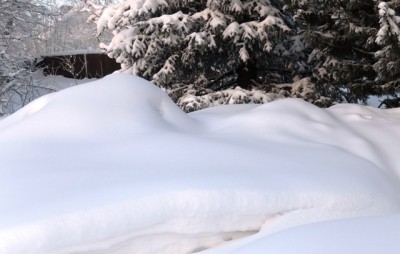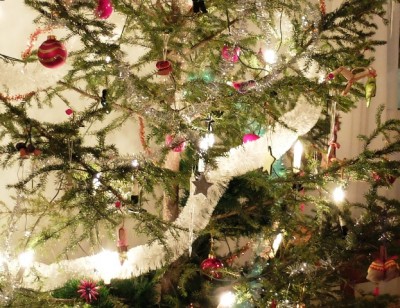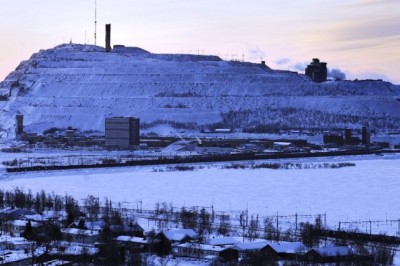You can’t help but be surprised, astonished even, when people return from a visit to the ice hotel and complain, ‘but it was so cold!’
Yes. It’s an Ice Hotel. Made of ice. Ice is cold.
It seems that sometimes people just aren’t prepared for the reality – the glamorous idea of the far north doesn’t always come with an understanding of its challenges or with a willingness to adapt to them.
The need to adapt all the time, not have things so routine and predictable, is the appeal for us, but for visitors hopping in and out for a couple of days it can be an unwelcome demand. Some guests travel within their own shell, bringing food from home to cook (please note, cooking food is not something we allow), turning the electric radiators up to 30 degrees, and walking around in their rooms in their underwear, reading copies of ‘Vogue’ magazine. However, they do still have to encounter some discomfort when they go outside our house.
In fact it’s been a particularly challenging week for all of us at ’68 degrees’. Opening the front door has invited swathes of cold air to swirl into the house, like an indoor version of the northern lights dancing round the hallway. It’s been like opening a giant freezer warehouse door and looking for the fish packets – only too cold to actually look for the packets so you just shut the door as quickly as possible.
For a couple of days the temperatures have been hovering around minus 37 degrees C, and the sun (yes, the sun has just started peeping over our due south horizon, lolling along it and then falling back down) is a low, hovering ball of red in a haze of ice crystals. Our visitors have come from areas where the temperature is in plus degrees what it is here in minus. It must be hard to comprehend.
Our wooden house was built in the 1920s, but upgraded many times since with all the insulation and triple glazing that is the norm here, but once temperatures fall below minus 25 its systems start to creak a bit. The warm air pump becomes a lot less efficient, and at minus 30 degrees has a tendency to switch itself off in protest. The electric radiators still work of course (and upstairs, in the warmest part of the house, if they’ve been turned up to 30 degrees you can still sip a pina colada in a bikini in your bedroom and imagine you’re on a beach in St Lucia or the Maldives). Our main living room has an efficient ‘kakelugn’, a kind of wood burner radiator. Still, with minus 37 degrees tapping at our window panes and creeping through the door every time someone goes in and out, the house is struggling to maintain a consistently warm temperature, and there are problems.
Ice on the inside of the windows for instance, even in a warm room. Almost inevitable, I gather. It’s humidity in the house with people breathing and, despite triple glazing, very cold glass on the outside and slightly cold glass on the inside. The lower inside of the window is least exposed to heat and water gathers there and eventually turns to ice. We live with it.
We couldn’t resist going out yesterday – and we went out of town to where it was coldest – minus 39 degrees, At that temperature the skies are beautiful colours, the cold deepening the pinks and blues to more mysterious shades of mauve and cerise. Then the snow, all its crystals separated so each one sparkling on the landscape. Ice crystals in the air, carrying the colours as they hover just above the land. When you walk outside your body feels it as a joy for the first few minutes, an exhilarating pleasure for the next ten minutes, a slight discomfort for the following ten minutes, and within 30 minutes it starts to be a bit painful. Only on the face, if you’re wearing all the right clothes, but the skin definitely objects. Hair falling around your face goes prematurely grey as the ice crystals attach to it. If you stop moving for a minute your feet begin to ache. It’s time to get back in the car and warm up.
Ah yes, the car – it’s Korean, and feels the need to warn us every time the temperature drops below plus 4 degrees, which it does most of the time you start the car here. The car also has a pain level. It doesn’t refuse to work, but in these temperatures it complains it has to work a bit hard. Yes yes, well we’re all struggling a little here, get used to it.
Almost everyone manages, carries on as normal. People go to work, go shopping, take the dog out. If you have a choice, you wouldn’t go skiing, go out on a snow scooter or drive a husky dog sled, but other than that you don’t need to change your life significantly.
So you can’t help but be surprised when you read that SJ, the rail company, have decided to cancel the trains because of the cold. Not because they are breaking down (why would they?) but because, they say, if they did break down it might be dangerous for the passengers. And for the same reason they can’t provide a replacement bus service, even though other buses are still running, our car works ok, and people manage perfectly well going about their daily business.
‘But,’ – wail the rail company – ‘it’s so cold!’
Yes, it’s the arctic. It gets cold here. Every year.
